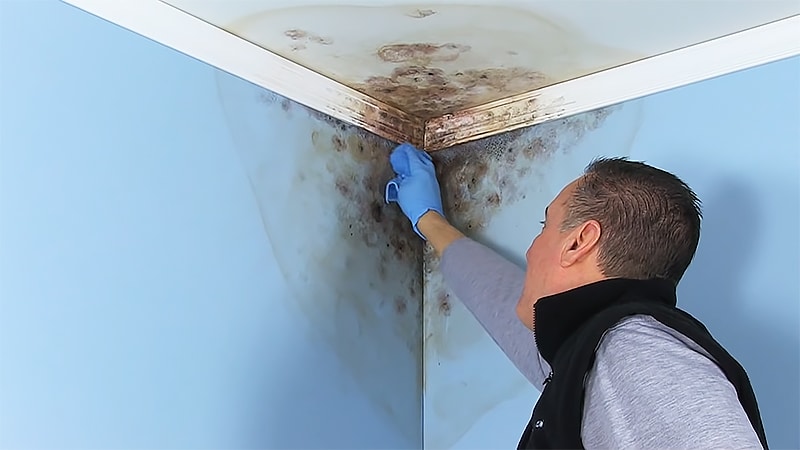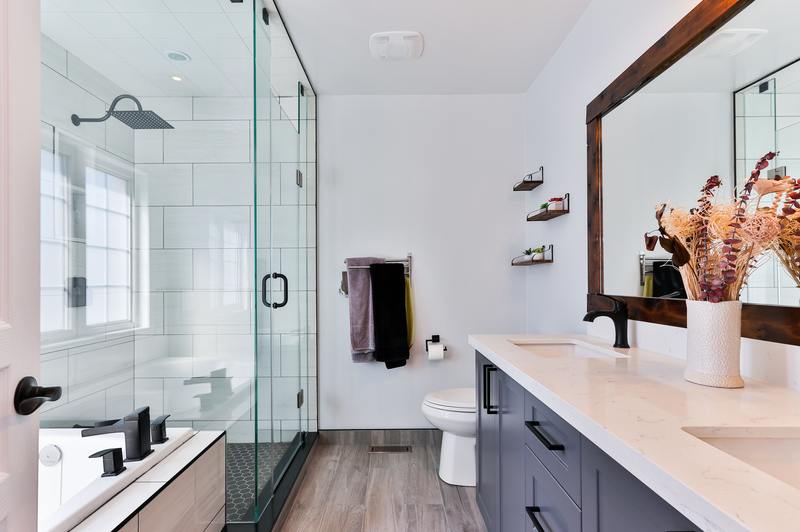Prevention and Removal of Bathroom Ceiling Mold

Mold growth on bathroom ceilings is a common problem that can be unsightly and detrimental to your health. Mold thrives in damp environments, and bathrooms, with their frequent exposure to moisture, are particularly susceptible. Understanding the causes and taking preventive measures is crucial to avoid mold infestations. This section will discuss effective strategies for preventing mold growth on bathroom ceilings and provide a comprehensive guide for removing existing mold.
Preventing Mold Growth on Bathroom Ceilings
Preventing mold growth is the most effective way to maintain a healthy and mold-free bathroom. By implementing the following strategies, you can significantly reduce the risk of mold formation on your bathroom ceiling:
- Ensure Proper Ventilation: Adequate ventilation is essential to remove moisture from the air. Use exhaust fans during and after showers to quickly expel steam and prevent condensation. Ensure the fan is working properly and runs for at least 15 minutes after showering. If you don’t have an exhaust fan, open a window to allow fresh air circulation.
- Minimize Moisture: Reduce the amount of moisture in the bathroom by wiping down surfaces after showers or baths. Use a squeegee to remove water droplets from shower walls and doors. Keep towels dry and replace them regularly.
- Repair Leaks Promptly: Leaky pipes or faucets can create a constant source of moisture, making mold growth more likely. Address any leaks promptly to prevent prolonged exposure to water.
- Use Mold-Resistant Paint: Apply mold-resistant paint to bathroom ceilings to create a barrier against mold growth. This type of paint contains mildewcide agents that inhibit mold spores from developing.
Removing Existing Mold from Bathroom Ceilings
If mold has already grown on your bathroom ceiling, it’s important to remove it promptly to prevent further damage and health risks. Follow these steps to effectively remove mold from your bathroom ceiling:
- Protect Yourself: Wear a mask, gloves, and eye protection to avoid inhaling mold spores or coming into contact with them.
- Prepare the Area: Remove any items or furniture from the immediate vicinity of the mold. Cover the floor with a drop cloth to protect it from spills and debris.
- Clean the Mold: Use a solution of water and bleach (1 part bleach to 10 parts water) to clean the mold. Apply the solution to the affected area using a spray bottle or a sponge. Allow the solution to sit for 10-15 minutes before scrubbing the mold with a stiff-bristled brush.
- Dry the Area Thoroughly: After cleaning, dry the area completely using a fan or a dehumidifier. Make sure all moisture is removed to prevent mold from regrowing.
Materials Needed for Mold Removal
Here is a checklist of essential materials you will need to effectively remove mold from your bathroom ceiling:
- Protective Gear: Mask, gloves, and eye protection
- Cleaning Supplies: Bleach, water, spray bottle, sponge, stiff-bristled brush, drop cloth
- Drying Equipment: Fan or dehumidifier
- Sealing Materials: Mold-resistant primer and paint
Cleaning and Sealing a Bathroom Ceiling After Mold Removal
After removing the mold, it’s important to clean and seal the affected area to prevent future growth. Follow these steps:
- Clean the Ceiling: Thoroughly clean the entire ceiling area with a mild detergent and water. This will remove any remaining mold spores and debris.
- Apply a Mold-Resistant Primer: After the ceiling is dry, apply a mold-resistant primer to the affected area. This will create a barrier against mold growth and help the paint adhere better.
- Paint the Ceiling: Once the primer is dry, apply two coats of mold-resistant paint. Allow each coat to dry completely before applying the next.
Bathroom Ceiling Mold and Paint: Bathroom Ceiling Mould Paint

Painting your bathroom ceiling with mold-resistant paint can help prevent mold growth and improve the overall appearance of your bathroom. This section will delve into the types of paint suitable for mold-prone bathroom ceilings, the benefits of using mold-resistant paint, and how to apply it properly.
Types of Paint for Mold-Prone Bathroom Ceilings
When choosing paint for your bathroom ceiling, it’s crucial to consider its mold-resistant properties. Here’s a comparison of different paint types:
- Acrylic Latex Paint: This type is commonly used for bathroom ceilings due to its durability, water resistance, and ease of application. However, it’s not inherently mold-resistant. To make it mold-resistant, you can add a mildewcide to the paint.
- Epoxy Paint: Known for its high durability and resistance to moisture, epoxy paint is an excellent choice for bathroom ceilings. It forms a hard, non-porous surface that makes it difficult for mold to grow. However, it can be more expensive and requires careful application.
- Oil-Based Paint: While oil-based paint offers good moisture resistance, it’s not recommended for bathrooms due to its strong odor and long drying time. Additionally, it’s not as breathable as latex paint, making it more susceptible to moisture buildup.
- Mold-Resistant Paint: This type of paint contains mildewcide, which actively prevents mold growth. It’s specifically designed for high-moisture areas like bathrooms and offers the best protection against mold.
Benefits of Using Mold-Resistant Paint
Using mold-resistant paint on your bathroom ceiling offers several benefits:
- Prevents Mold Growth: The mildewcide in mold-resistant paint actively inhibits the growth of mold spores, reducing the chances of mold infestation.
- Improved Indoor Air Quality: Mold can release allergens and toxins that affect indoor air quality. Using mold-resistant paint helps maintain a healthier indoor environment.
- Enhanced Aesthetics: Mold growth can disfigure the appearance of your bathroom ceiling. Mold-resistant paint helps keep your ceiling looking clean and fresh.
- Cost-Effective: Preventing mold growth through the use of mold-resistant paint can save you money on future mold removal and remediation costs.
Applying Mold-Resistant Paint, Bathroom ceiling mould paint
Proper application of mold-resistant paint is essential for maximizing its effectiveness:
- Prepare the Surface: Thoroughly clean the bathroom ceiling with a mold-killing solution and allow it to dry completely. This step is crucial for removing existing mold and creating a clean surface for the paint to adhere to.
- Apply a Primer: Using a mold-resistant primer will create a barrier against moisture and provide a better surface for the paint to bond with.
- Apply the Paint: Use a high-quality paintbrush or roller to apply the mold-resistant paint in thin, even coats. Allow each coat to dry completely before applying the next.
- Maintain Proper Ventilation: Ensure adequate ventilation during and after the painting process to allow the paint to dry properly and prevent moisture buildup.
Visual Representation of Applying Mold-Resistant Paint
Illustration:
Imagine a bathroom ceiling with visible mold growth. The first step is to clean the ceiling thoroughly with a mold-killing solution, removing all traces of mold. Next, apply a mold-resistant primer to create a barrier against moisture and enhance paint adhesion. Finally, apply two coats of mold-resistant paint, allowing each coat to dry completely before applying the next. The final result is a clean, mold-free bathroom ceiling.
Bathroom ceiling mould paint – Bathroom ceiling mold paint is a common problem, especially in humid environments. It can be unsightly and even harmful to your health. To combat this, you can opt for a more stylish solution like chic shadow bathroom paint.
This technique uses darker shades on the ceiling to create a sense of depth and sophistication. While it won’t address the mold issue directly, it can help to visually minimize the impact of the discoloration on the ceiling.
Bathroom ceiling mould paint is a common problem, often caused by excess moisture and poor ventilation. If you’re noticing peeling paint on your bathroom ceiling, it could be a sign of a bigger issue. Why is my paint peeling in the bathroom can help you determine the root cause, whether it’s trapped moisture, improper paint application, or even a leak.
Addressing the underlying issue is crucial to prevent further mould growth and ensure a healthy and aesthetically pleasing bathroom environment.